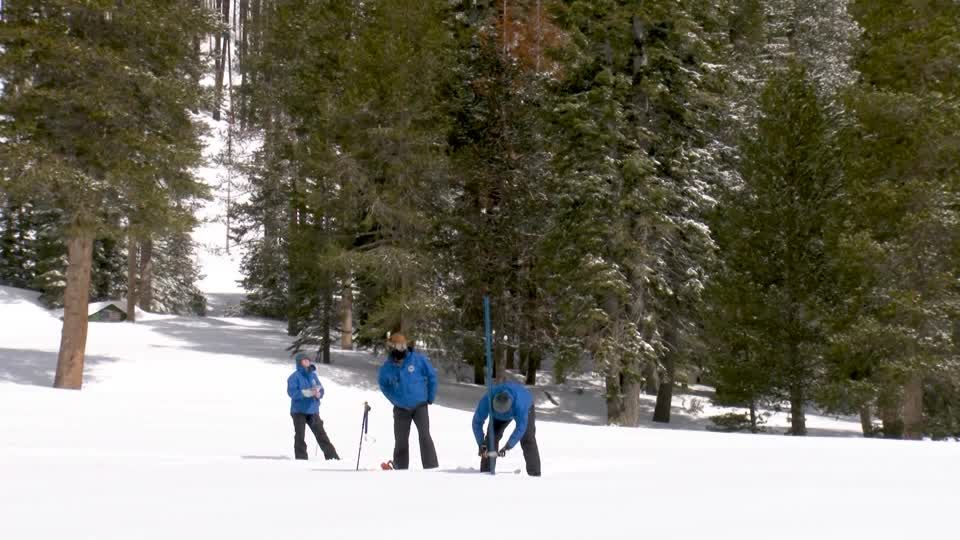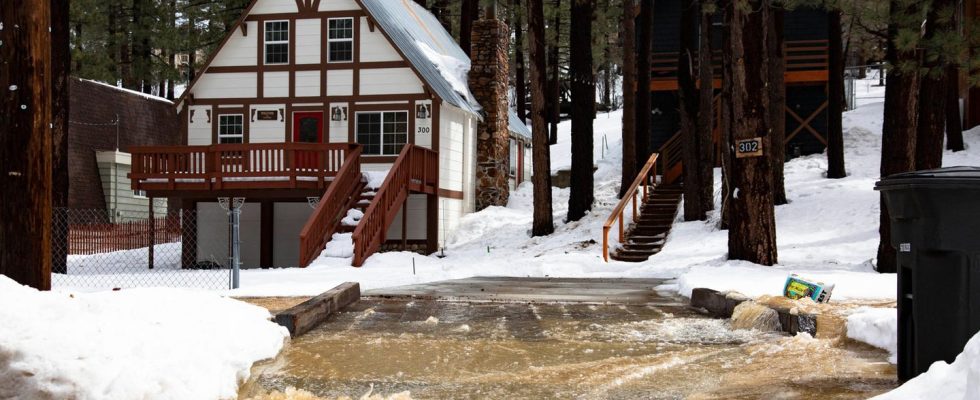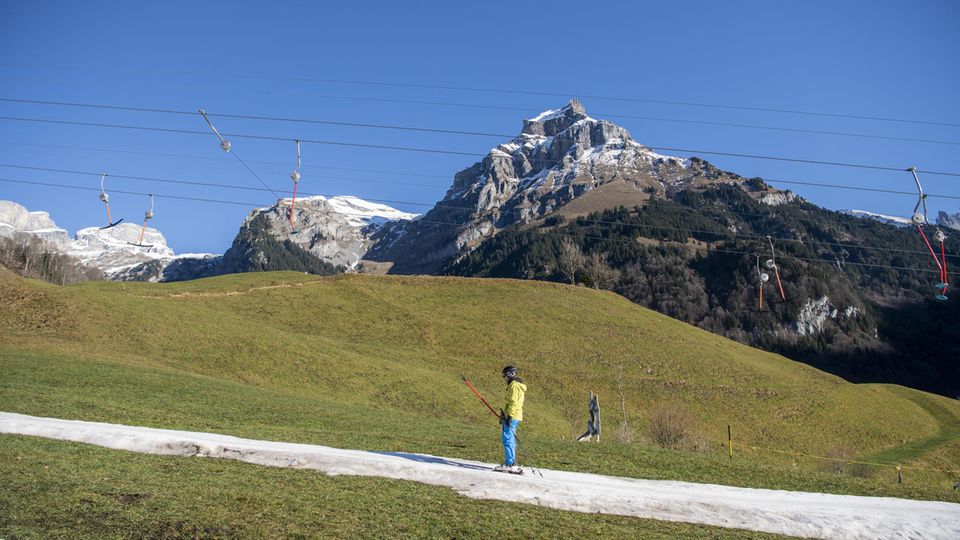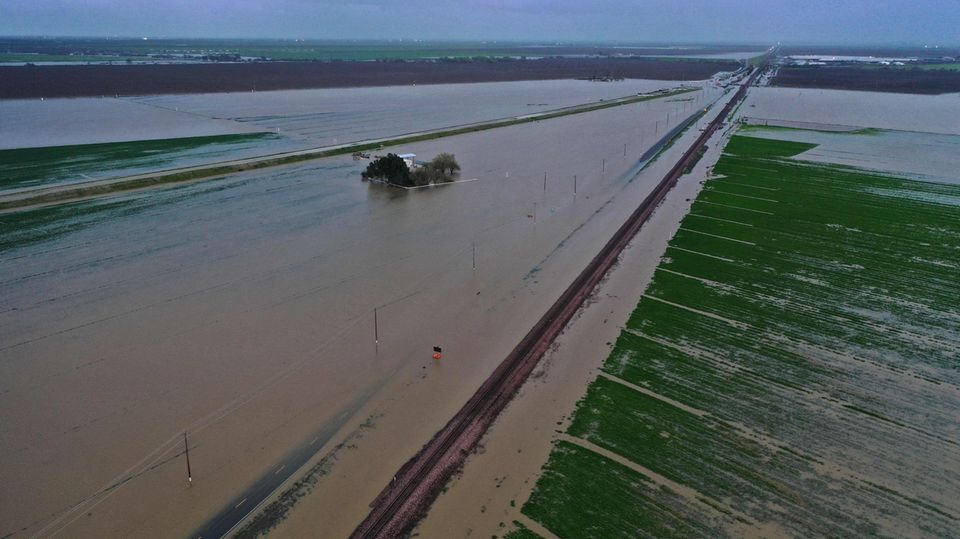Historic amounts of snow fell this winter in the US state of California, which has been suffering from water shortages for years. Summer temperatures are now melting them – and the running water is threatening entire areas.
Actually, the western United States has been suffering from a severe drought for many years. As a result, the levels of lakes and rivers have dropped dramatically and the risk of forest fires has increased just as dramatically. A study in February 2023 published in the UK journal Nature Climate Changeeven called the prolonged dry season in parts of the states of California, Arizona, New Mexico, Colorado, Utah and Nevada and northwestern Mexico the worst “mega-drought” in the region in at least 1,200 years.
This winter, especially in California, there was finally heavy rainfall over a longer period of time. However, these were so strong that some regions were already flooded or disappeared under record amounts of snow for weeks.
In Northern California, around Lake Tahoe, nearly four meters of snow fell in just one week in March, the weather agency NOAA announced in early April. Further south, in the central and southern parts of the Sierra Nevada, the thickest snow cover has been measured in 90 years. In the southern Sierra Nevada, snow cover is still 256 percent of normal at this time, according to the Los Angeles Times.
With the onset of spring weather, these masses of snow are now beginning to melt, bringing with them a new danger: massive flooding.
“The ‘big melt’ is here now”
Temperatures in central California have risen sharply in recent days and are expected to reach 34 degrees Celsius over the weekend, according to forecasters. In addition, blue skies and strong sunshine are forecast for the coming days. Night temperatures are also expected to be well above 10 degrees. As a result, the snow in the Sierra Nevada could melt at any time.
“The ‘big melt’ is here now,” Daniel Swain, a climate researcher at the University of California at Los Angeles, told the Los Angeles Times. “We had said there would be a week somewhere between around March and May where snowmelt would increase dramatically, either due to a heatwave or a warm storm late in the season. I think that’s probably this week now.”
The problem is that the runoff meltwater mainly runs into water bodies and areas that have already experienced flooding this year, explained Swain. “Many rivers that are currently still moving within their bed but are relatively high could exceed the flood limit later this week.” The scientist warned of a “significant risk” on social media.
Mike Howard of the California National Parks Authority takes a similar view: “Right now the rivers are deadly cold and fast,” he told the San Francisco Chronicle. No one has ever seen anything remotely comparable to current water levels and currents.
Severe Storm
Snowed in and flooded: The sunny state of California is flooded with water and snow
One area already affected is the Tulare Lake Basin. Lake Tulare in Kings County was once one of the largest freshwater lakes in the western United States. With the development of agriculture and the diversion of rivers, its water level then progressively declined. In the middle of the last century it finally dried up completely and also became an agricultural area.
But in recent weeks, authorities have been diverting water from the severely swollen Kings River into the region, bringing the lake to life – while flooding ranches and farmland. According to the Washington Post, Robert Thayer, deputy sheriff of Kings County, estimated the size of Tulare Lake at 260 to 360 square kilometers with an average water depth of a good one meter last Friday. It’s as if Manhattan, Brooklyn and large parts of the Bronx were waist-deep in water.
So far, only about five percent of the snow has melted, as Swain recorded on YouTube on Monday. The residents of the agricultural area, in which nuts, fruit and vegetables are grown, have already expressed their concern about the ailing flood protection in view of the impending “major meltdown”, reports the US news site “Axios”.
California has neglected flood control for years
Water experts complain that the drought, which has lasted for years, has diverted the attention and resources of the authorities from flood management. In addition, more and more cities have emerged in regions that are actually at risk of flooding, so that the agricultural workers could live near the ever-expanding fields.
The Washington Post writes that the dilapidated infrastructure could now be subjected to a test that has not been seen in decades. Billions of gallons of water could flow through the San Joaquin Valley’s already saturated waterways and levees. Parts of the region are already endangered, not only by the snowmelt, but also by full reservoirs. Authorities issued a flood warning for Tulare and two surrounding counties earlier this week because levees had broken.

According to the meteorologists, where and how severely communities will actually be flooded in the next few weeks depends largely on how quickly and how hot it gets. “Water goes where it wants to go, and it finds our weak spots, especially with poor design, poor planning, and poor maintenance,” warns Jeffrey Mount, senior fellow at the Public Policy Institute of California’s Water Policy Center, of the deficient flood -Infrastructure. He gives little hope to the people in the endangered areas: “It’s a tough lot for these people. They’re absolutely stuck.”
Sources: The Weather Channel, “Los Angeles Times”, “San Francisco Chronicle”, Daniel Swain on Youtube, “Washington Post”, “Nature Climate Change”



